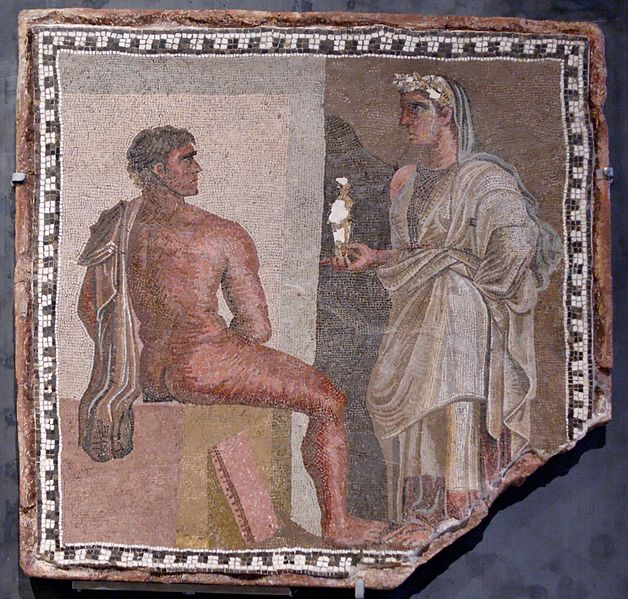In the vast realm of Greek mythology, Orestes carves a distinct narrative. As the son of Agamemnon and Clytemnestra, his life is deeply entwined with the aftermath of the Trojan War, embodying a tale of vengeance, justice, and the relentless grip of fate.
Orestes’ story transcends a mere hero’s journey. It unveils complex familial and moral entanglements, reflecting the ancient Greek understanding of justice and destiny. Through his tale, we delve into a world where divine mandates and human emotions clash, offering a glimpse into the nuanced moral landscape of a bygone era.
Orestes Key Facts
| Parents | Agamemnon and Clytemnestra |
| Partners | Hermione and Erigone |
| Siblings | Electra and Iphigenia |
| Offspring | Tisamenus |
| Other names | – |
| Roman name | Orestes |
| Best Known Myth | Matricide and the Eumenides |
Name and Etymology
The name Orestes, derived from the Greek word “ὀρέστης,” is often interpreted as “mountain man” or “he who stands on the mountains,” a fitting moniker for someone whose life would be filled with monumental challenges and lofty moral dilemmas. The etymology reflects not only a physical attribute but a metaphorical stance, portraying a figure who navigates the high and low points of human existence.
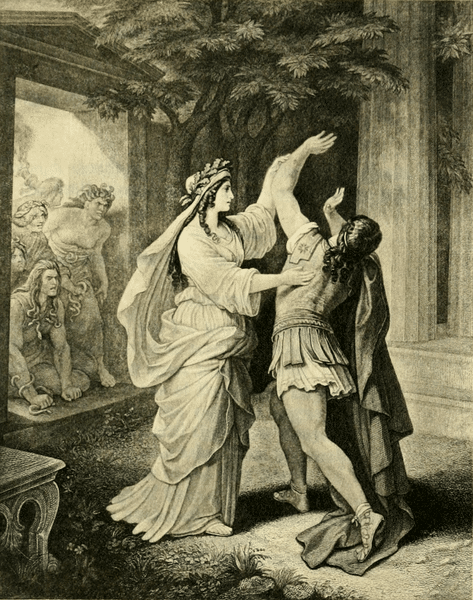
In the Roman adaptation of Greek mythology, Orestes retains his name, a testament to the character’s profound impact and recognition across cultures. His narrative, laden with themes of revenge, justice, and familial duty, resonated with the Roman ethos, finding a place in their own retelling of ancient myths.
Besides his primary name, Orestes is also known by epithets that reflect his deeds and the circumstances of his life. Each title, a narrative in itself, encapsulates the myriad facets of his existence, from the avenger of his father to the tormented soul seeking solace from the Furies’ relentless pursuit.
Orestes Family and Relationships
Born into the house of Atreus, a lineage known for its tragic and often gruesome history, Orestes’ life was anything but ordinary. His father, Agamemnon, was a key figure in the Trojan War, while his mother, Clytemnestra, became infamous for her adulterous affair with Aegisthus and the subsequent murder of Agamemnon. The dynamics of his immediate family set the stage for the tumultuous events that would follow.
The circumstances of Orestes’ birth and early childhood were overshadowed by the Trojan War’s looming specter. His father’s decision to sacrifice his sister Iphigenia to appease the gods was a harbinger of the tragic events that would envelop their family. This act, driven by the inexorable call of duty, sowed the seeds of discord between his parents, a rift that would ultimately demand retribution.
Orestes’ relationships extended beyond the familial sphere. His love interests, Hermione and Erigone, and his close bond with his sister Electra, played pivotal roles in his narrative. These relationships, marked by loyalty, love, and the shared burden of avenging past wrongs, added layers of complexity to his character, showcasing the human aspect of a hero often caught in the gods’ whims.
Myths about Orestes
Orestes’ narrative is a rich blend of intertwined myths, each shedding light on his multifaceted character and the moral landscape of ancient Greek society.
Matricide: Avenging Agamemnon
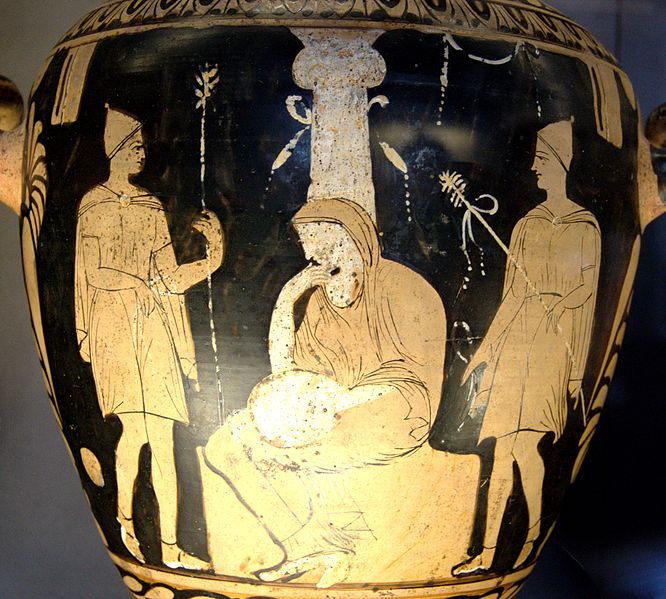
At the heart of Orestes’ tale is the act of matricide, a divine mandate from Apollo to avenge his father, Agamemnon’s murder. With the aid of his sister Electra, Orestes executes vengeance upon his mother Clytemnestra and her lover Aegisthus. This act, while fulfilling the divine mandate, sets the stage for a series of events that would haunt Orestes, marking his life with a blend of triumph and torment.
The act of matricide is a vivid exploration of the ancient Greek concept of justice and retribution. It reflects the inexorable grip of fate and the heavy burden of familial duty, themes that resonate deeply within the broader narrative of Greek mythology.
Tormented by the Furies
Following the act of matricide, Orestes finds himself haunted by the Furies, ancient deities of vengeance. They torment him relentlessly, a vivid depiction of the consequences of defying the natural order. The Furies’ pursuit is not merely a personal vendetta; it’s a divine enforcement of the moral laws governing the ancient Greek world.
Orestes’ torment by the Furies is a poignant exploration of the delicate balance between divine justice and human agency. It also highlights the profound impact of guilt and the quest for atonement, themes that are central to understanding the human condition in the face of divine mandates.

Trial and Redemption: The Eumenides
The culmination of Orestes’ torment and quest for redemption occurs in his trial in Athens, a seminal event presided over by the goddess Athena. This trial, a significant narrative within the broader myth of Orestes, not only seeks to absolve him but also aims to transform the Furies into the Eumenides, benevolent spirits of retribution.
The trial is a nuanced exploration of justice, atonement, and the transformation of ancient Greek societal norms. It reflects a shift in the understanding of retribution and forgiveness. Moreover marking a significant transition in the moral and ethical landscape of ancient Greece.
Depiction And Characteristics
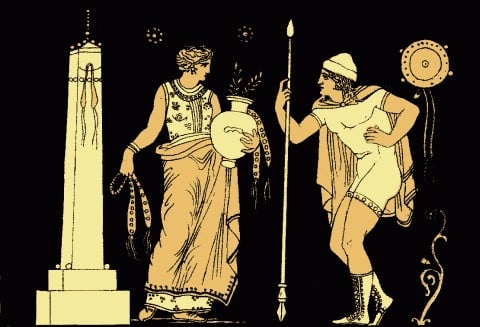
Orestes’ portrayal in ancient art and literature is as varied as his myth. His appearance often reflects the torment and the moral burden he carries, embodying the quintessential tragic hero of Greek mythology. His visage, is usually depicted as a mix of resolve and anguish. Telling the story of a young man bound by duty, however, deeply haunted by his actions.
Symbols associated with Orestes often revolve around his deeds and the characters intertwined with his fate. The sword, an instrument of vengeance, and the Furies, the relentless pursuers of justice, are recurring symbols in his tale. They serve as a reminder of the fine line between justice and retribution, a central theme in his narrative.
The personality of Orestes is a complex blend of duty-bound stoicism and a deeply emotional human being grappling with the consequences of his actions. His interactions with other characters, notably his sister Electra and the god Apollo, reveal a character torn between the divine mandate and the human cost of fulfilling such a mandate.
Representations Of Orestes In Art
One of the most notable artworks featuring Orestes is the “Oresteia” by Aeschylus. This is a trilogy of tragedies that delve into the house of Atreus’ curse and Orestes’ quest for redemption. While not a physical artwork, this literary masterpiece paints a vivid picture of Orestes’ tragic yet heroic journey. Moreover it is encapsulating the essence of his character and the moral dilemmas that define his narrative.
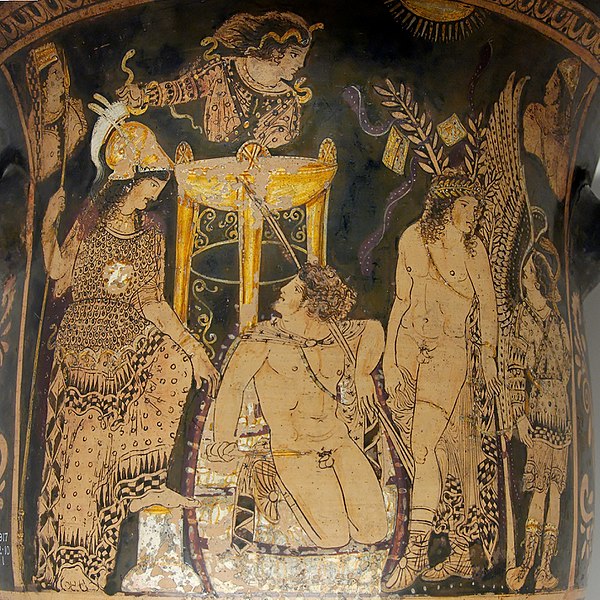
Other artworks, such as vase paintings and sculptures, typically depict him in various stages of his myth. These representations both immortalize Orestes’ tale as well as offer a glimpse into the ancient Greeks perception of justice and fate.
Mentions in Ancient Texts
Orestes’ tale has been immortalized in numerous ancient texts. Each rendition shedding light on different facets of his character and the broader Greek mythology landscape.
Homer’s Odyssey
Homer, the legendary ancient Greek poet authored the epic poems the “Iliad” and the “Odyssey” around the 8th century BC. In the Iliad he alludes to Orestes’ act of vengeance against his mother and her lover. This mention serves as a moral lesson for the protagonists, emphasizing the ancient Greek values of familial loyalty and retribution.
In a notable excerpt, Homer extols Orestes’ virtue in avenging his father, presenting him as a paragon of filial duty:
“Orestes… who avenged his father’s murder by killing that cunning and murderous Aegisthus.”
Aeschylus’ Oresteia
Aeschylus, one of the three great tragedians of classical Athens, penned the trilogy “Oresteia” in the 5th century BC. This work delves into the depths of Orestes’ narrative, exploring the complex interplay of divine will, justice, and human agency.
A notable quote from the text encapsulates the essence of Orestes’ struggle:
“For the dead, there is no more to suffer. But Orestes lives, to suffer.”
Euripides’ Electra
Euripides, another of the three great Athenian tragedians, wrote “Electra” around 410 BC. In this work, he explores the emotional turmoil and the bond between Orestes and his sister Electra. Together they plot and execute vengeance against their mother and her lover.
Euripides’ portrayal of Orestes provides a more humanized glimpse into the psychological torment and moral dilemmas faced by the hero.
Frequently Asked Questions avout Orestes
Orestes is primarily known for avenging his father Agamemnon’s murder by killing his mother Clytemnestra and her lover Aegisthus. This deed led to his torment by the Furies and his eventual trial and absolution in Athens.
He is the son of Agamemnon, a key figure in the Trojan War.
Orestes’ trial in Athens, presided over by the goddess Athena, resulted in his acquittal. This event also transformed the Furies into the Eumenides, benevolent spirits. Furthermore marking a significant transition in the ancient Greek understanding of justice and retribution.
Orestes is often depicted in moments of action or torment, reflecting his struggle with duty and retribution.
Orestes’ tale explores complex themes of familial duty, justice, and the human quest for redemption.
Featured Image Credit: Unknown, Public domain, via Wikimedia Commons

